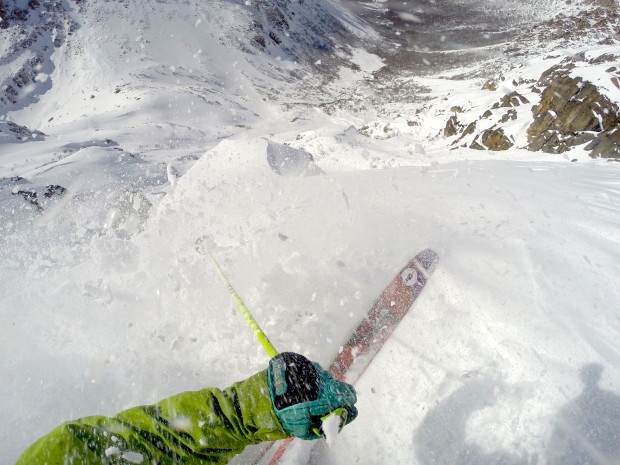
**Originally published in 2014
So, you’ve booked a flight to Buenos Aires. The plan is to go ski in South America – The dream is coming true! However, as the trip gets closer you start realizing a few things.
1) You haven’t actually planned anything.
2) You aren’t a baller and your Northern Hemisphere winter job at a restaurant in a ski town isn’t going to allow you to ski the lifts for more than a few days.
3) The reports are coming in from down south that they are having the worst year on record…
4) You don’t actually know a single word of spanish except for “uno mas cerveza, por favor.”
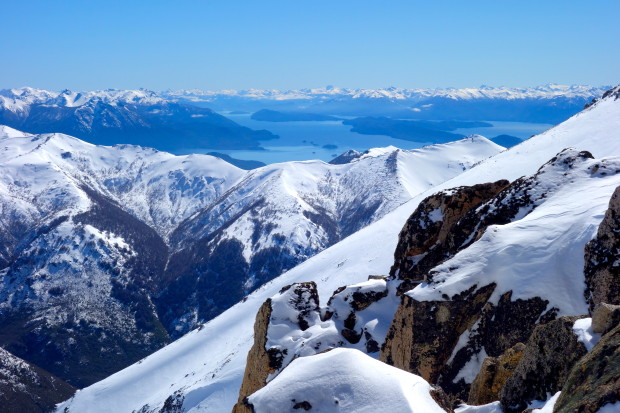
Luckily none of this matters. Argentina is an easy country to navigate. There are tons of places to go backcountry skiing for free. Even in the worst year on record, Argentina is a Maritime climate and there will be snow, it just might be a bit higher elevation than usual. And lastly many people speak at least some English and it wont take long to learn a bit of Spanish to get you around.
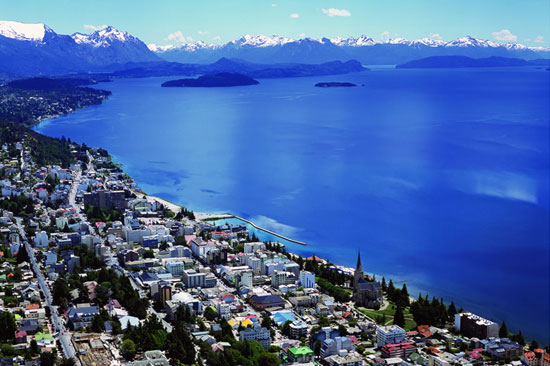
Bariloche is an amazing place to base out of. It has great access to amazing backcountry terrain with an extensive refugio (hut) network. The article below is a great guide to getting there from Buenos Aires.
How To Get from EZE to Buenos Aires to Las Leñas or Bariloche
The rest of this article is meant to serve as a guide to getting the most out of your time backcountry skiing in Bariloche.
Bariloche is at an elevation of about 800m. It rarely snows down to this level and when it does it often melts quickly. The ski area in Bariloche is Catedral Alta Patagonia (Catedral). From the ski area you can access the refugio (hut) network. The refugios are the crown jewel of Bariloche
The Bus:

There is an hourly bus (3 de mayo – town bus) from the town center to Catedral. It is never on time, and always very crowded. Welcome to Argentina! The bus costs 10peso (~$.67 at the writing of this article). If you are motivated, the 7:10am bus is usually on-time and empty, the 8:10 can be this way but it depends on the time of year and the snow conditions. If you take the 9:10, 10:10, or 11:10, be prepared to wait 5-45min at the bus stop and be prepared to stand on a crammed bus for 30min – 1hr.
Catedral Ski Resort:
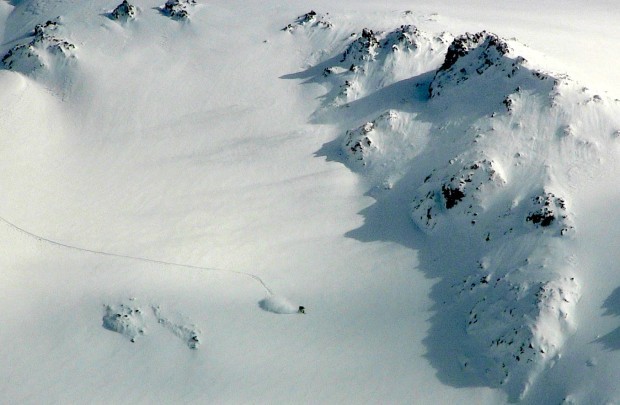
Catedral is one of the largest ski areas in South America. However, much of the terrain is low elevation and is rarely open. Don’t let this discourage you though. The mountain is designed for this. There are two sets of lifts. The first are the lower lifts, the gondola and the sextuple. Take either of these up in the morning, ski the upper lifts all day, and then download in the afternoon. The Nubes lift is the best for ripping quick laps on, as it is the only highspeed on the upper mountain. The Del Bosque lift has the best access to some sick sidecountry terrain called La Laguna.
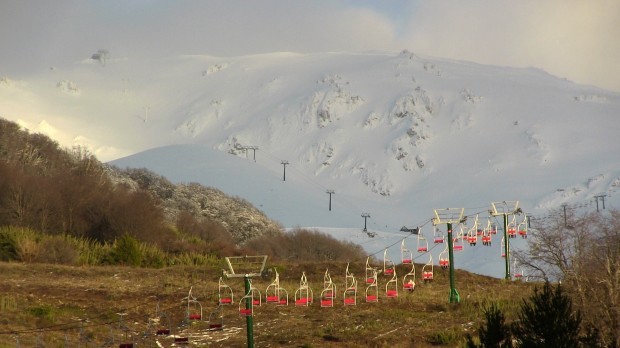
The cost of a lift ticket varies with the time of year but is anywhere from about 30-50USD per day. They do not sell single ride lift tickets, which is a total bummer.
The Refugios:
Refugio Frey:
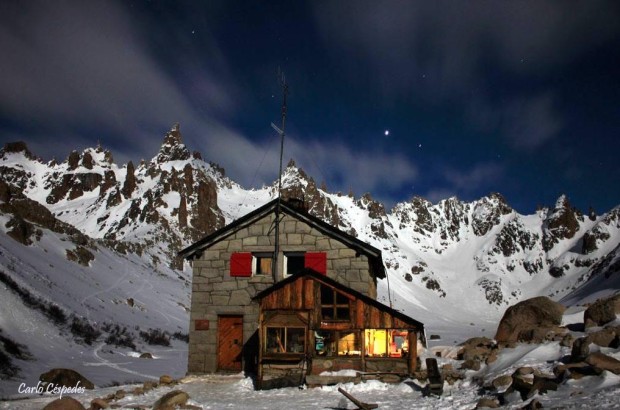
Refugio Frey is a bit of a magical place. A mere 2-4hr walk from the base of Catedral and you are looking at wall of steep chutes. Just on the other side of the ridge are wide open steep. Off in the distance are seemingly endless mountains with more couloirs, steeps and glaciers.
Getting There:
There are two ways to get to Refugio Frey. The first is to hike about 2-4hrs and the second is to ski off the back of Catedral and take a few runs until you make it to Frey.
The hike was my preferred option. It takes anywhere from 2-4hrs depending on how fast you are and how much you are carrying. Take the bus to Catedral. From where the bus drops you off walk south to a sign that says Refugio Frey.
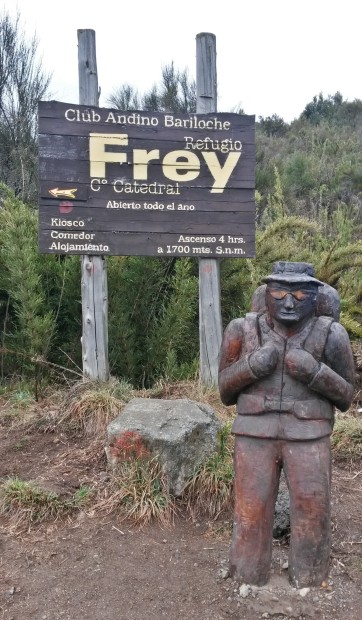
The trail is very well marked and if you can’t make it to Frey from the sign there is nothing I can say that will help. Thanks to the Club Andio de Bariloche you will also know everything you need to know about each bridge you cross – if it is wood or metal, how many meters long it is, and how many people it can hold (hint: they are all 8).
For the sake of completeness, there is another trail that starts at Lago Gutierrez. It is harder to get to this trailhead however, and the trail is a bit steeper. The trails meet up at about the halfway point.
The second option for getting to Frey is to take the lifts up Catedral and drop off the back. From the top of the Nubes chair head skiers right. Sidestep up to the prominent saddle. There you will see a trail heading south towards a small notch. Likely the slope with the trail will be completely wind-scoured. You are now entering backcountry terrain. Have you beacon, shovel, probe, partner, map and the necessary gear for however many nights you plan to stay.
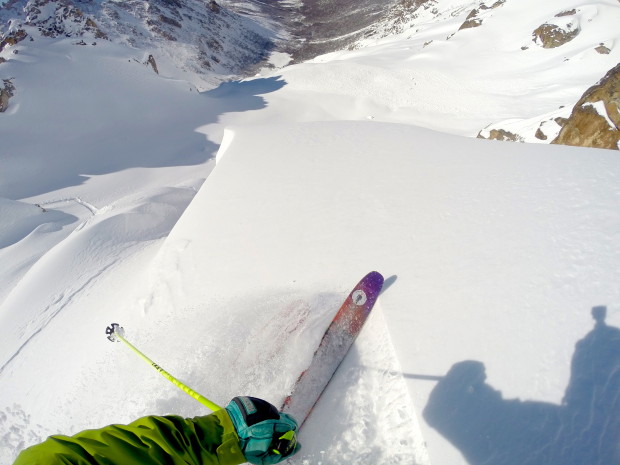
Walk/ski/skin the trail, for 10-25min. From the notch you have 2 options. The first requires a bit of navigation. The second option is more straight forward, but can also be a hassle, especially in a low snow year.
Option 1: From the notch you will ski two short slopes with short (30min – 1hr) skins between them, working you way south down the ridge. These slopes are steep and exposed. You are very much in avalanche terrain! Only ski these slopes if you are 100% sure there is no avalanche danger. The Van Titter valley (this is where you are) has the propensity to warm up with the sun and avalanche in a big way! At the top of the second skin there is a summit called La Roca Inclinada (inclined rock). There is a big rock on its side that should be pretty obvious. From there you simple jump to the south side of the ridge and ski down to Laguna Schmol and then down to Laguna Tonket. Walk across the flats and the lake and you are at Frey!
Option 2: From the notch ski straight down to the bottom of the Van Titter valley. This option is a bit safer avalanche wise, but remember that the Van Titter can avalanche huge in the right conditions and skiing on the valley floor may seem safe but you may still be exposed. From the bottom hack your way through the Lenga, working your way towards the saddle to the West. Lenga is basically the only tree that grows around here. It can grow large and provide great glades, it can also stay small and act like the willows or alders we know and love in North America, creating a wall of seemingly impenetrable growth. You may find the trail, but probably not. When you finally make it to the saddle, Frey will be right there!
Services and Cost at Refugio Frey:
The Skiing:
Some of the highlights are as follows, from lookers right to left:
Tips and Tails – A pair of insanely narrow chuteletts. Tips – the one skiers right is wide enough to make hop turns in, but should really just be straight-lined. Tails – the one skier left is not wide enough to turn in. either sideslip or straight-line. There is a rock halfway down that is not friendly. Both chutes are a bit tricky to find from the top the first time, so booting up them may be a better option.
Central Vecinal (aka center chute) – Another steller chute. A bit shorter (150m) than others, but a constant 5m or so width and high walls provides for great skiing, holding soft snow longer than many other lines. Northeast aspect, but high walls keep it more protected from the sun than you would expect.
El Monge (aka the monk) – One of the longest chutes at about 400m. Not the narrowest or steepest, but provides a great run if you hit it before the sun does as it has a northeast aspect.
Principal – A long run (400m+) with a bit of everything. Open mellow(25+degrees) turns at the top funnel you into your choice of two chutes. Nothing is more than 35 degrees and nothing to narrow. The best mellower line. A north aspect though, so make sure to hit it early before the sun. Also a great option in a good corn cycle.
East Principal – The longest run around at 500m. Best accessed from the top of Principal (above) and jumping the ridge south. It has a Southeast aspect at the top turning to more east near the bottom. The top provides a huge featured slope with spines and rocks to jump off. Then you get funneled into numerous short chuteletts. Take your pick, they mostly all go. The bottom can be a bit manky with avalanche debris and or sloppy snow, but just remember the top! To get back to Frey skin 100m or so North up the obvious open slope, and jump ridge.
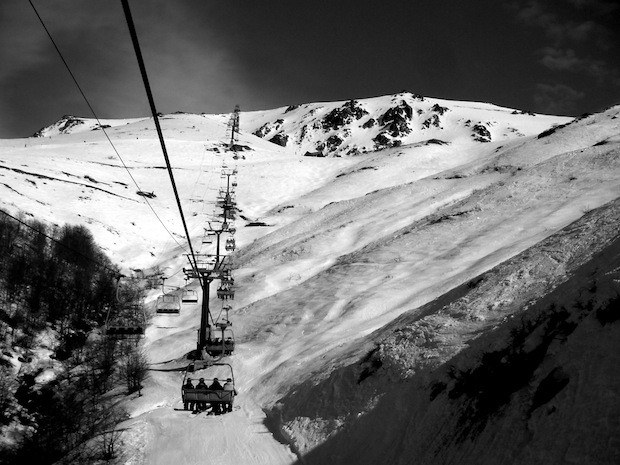
Conclusion:
SO, if you’ve made it this far you are probably already convinced and have kayak.com up in another window searching for deals on tickets to Argentina. But if you still need a bit more convincing, the summer months have you down and you are looking for the backcountry adventure of your life, then head to Bariloche and experience The Catedral ski area, the beautiful city of Bariloche, the mountains, lakes and streams of Patagonia and the amazing refugio system, especially Refugio Frey!
![Refugio Frey and all it's glory dinner and a view at Refugio Frey [Photo: Aaron Rice]](http://staging.snowbrains.com/wp-content/uploads/2015/06/2014-09-10-08.13.18-620x349.jpg)
![dinner and a view at Refugio Frey [Photo: Aaron Rice]](http://staging.snowbrains.com/wp-content/uploads/2015/06/2014-09-03-18.30.32-620x364.jpg)
![East Face of Principal [Photo: Aaron RIce, Skier: Inti]](http://staging.snowbrains.com/wp-content/uploads/2015/06/2014-09-11-11.01.23-620x349.jpg)
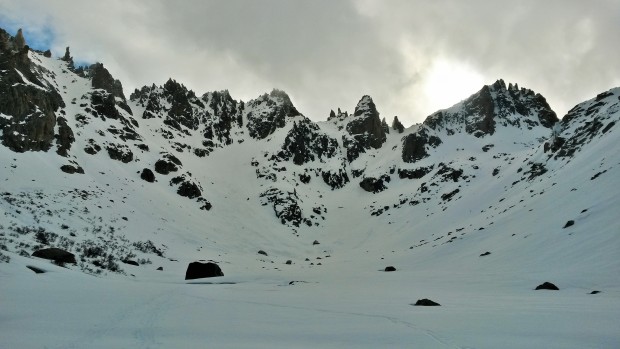
![My crude map of the skiing around Frey [By: Aaron Rice]](http://staging.snowbrains.com/wp-content/uploads/2015/06/2014-09-27-18.04.20-620x379.jpg)
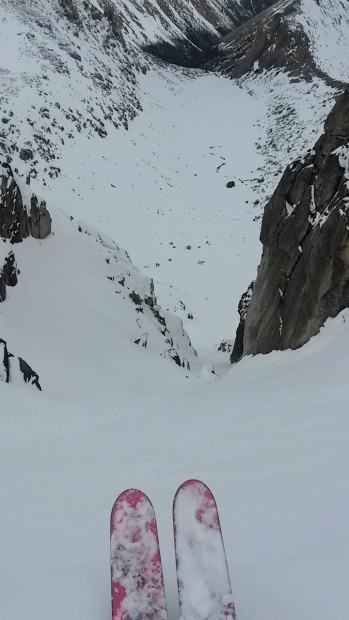
How about end of sept 1 st week of October? Thank you
Cool Aaron! Here leave you our site if is helpful for somebody. We have been guiding there since 1999.-https://www.andescross.com/trips/skiing-frey-hut-couloirs-and-granite/
Hey guys! what’s the best time for summer skiing?
Aug 5 – Sept 5!!
Great Article ! I have been hiking there during the summer (Frey and Jacob). If you look for a local certified mountain guide for ski touring there, I recommend you to contact Lucas >>> https://www.explore-share.com/trip/ski-touring-in-frey-bariloche
Great stuff! Thanks Aaron. Summer trekked there, now time to get the winter white on.